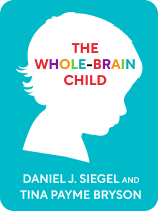

This article is an excerpt from the Shortform book guide to "The Whole-Brain Child" by Daniel J. Siegel and Tina Payne Bryson. Shortform has the world's best summaries and analyses of books you should be reading.
Like this article? Sign up for a free trial here .
What are the upstairs and downstairs brain domains? What mental and emotional capacities are associated with each brain domain?
The concept of upstairs and downstairs brain domains comes from Dr. Dan Siegel and Tina Payne Bryson’s book The Whole-Brain Child. The upstairs brain is the rational brain that is responsible for high-level thinking and decision-making, while the downstairs brain controls basic functions and automatic reactions.
Learn about the notion of upstairs and downstairs brain domains.
Integrating the Upstairs and Downstairs Brain Domains
In addition to horizontal integration between your child’s left and right brains, it’s important to facilitate vertical integration between the lower and upper regions of the brain—we’ll call them the downstairs and upstairs brains.
The downstairs brain encompasses the brainstem and limbic region, which are located between the top of your neck and the bridge of your nose. The downstairs brain controls basic functions, as well as knee-jerk reactions, enabling you to act before you think, which can be crucial for survival and safety. These functions include:
- Automatic actions, such as breathing and blinking
- Strong emotions, such as fear and anger
- Impulses, such as fight or flight
The upstairs brain comprises the various parts of the cerebral cortex, which sits behind your forehead and right under the top of your head. The upstairs brain is responsible for high-level thinking, allowing you to think through context, consequences, and the impact your actions may have on others. These processes include:
- Analytical thinking
- Planning and decision-making
- Emotional and physical control
- Self-understanding
- Morality
- Empathy
A mind that’s vertically integrated between the downstairs and upstairs brain is like a house with an easily accessible stairway connecting the upstairs and downstairs. The upstairs brain tempers the impulses and strong emotions of the downstairs brain, while the downstairs brain contributes emotions and gut instincts to upstairs decision-making. However, when you experience intense fear or anger, your downstairs brain takes over and blocks the stairway to your upstairs brain. That’s part of the interaction between the upstairs and downstairs brain domains.
Children have an added challenge to vertical integration, because their upstairs brains don’t fully mature until they’re in their mid-20s. This makes it even more important that you give your child an opportunity to practice using her upstairs-brain.
Give Your Child Upstairs-Brain Workouts
The more your child practices using her upstairs brain, the stronger it becomes. If she doesn’t use her upstairs brain enough, it could lose some of its functional capacity, which is especially concerning because the upstairs brain plays a major role in mental health and social and emotional intelligence.
In addition to talking about and teaching kids reasoning skills, it’s essential that you model these behaviors. Since your child learns how to navigate the world by watching your example, modeling thoughtful decision-making, self-control, self-understanding, empathy, and morality is the best way to instill these values.
Now, let’s look at the upstairs brain’s key functions, and how to help your child work those mental muscles.
Decision-Making
Decision-making requires evaluating multiple options, projecting what the outcome of each option would be, and then weighing the pros and cons of those outcomes. When your child is young, give her simple decisions to make, such as choosing which shirt to wear. As she gets older, her decisions should be increasingly complicated and have increasingly substantial consequences.
As long as your child’s decision doesn’t cause significant harm, refrain from stepping in and steering her to another option or rescuing her from the consequences of her decision. Struggling through the decision-making process and dealing with its outcomes are both critical aspects of learning, practicing, and building decision-making skills.
Emotional and Physical Control
Teach your child to recognize when her downstairs brain is taking over, and how to regain control with her upstairs brain. This is important when you don’t yet have integration between the upstairs and downstairs brain domains. These skills will help her prevent downstairs-brain takeovers, so that she can make good decisions when she’s upset.
Teach your child common calming techniques, such as:
- Punching a pillow
- Stomping her feet
- Counting to 10
- Taking a deep breath
Self-Understanding
If your child examines how she feels and why, she’ll improve her self-understanding, which gives her the insight to make well-informed decisions, manage her emotions, and understand the world and people around her. Ask your child questions that look beyond the surface level—not just the “what,” but the “why.” For example, “Why did your brother’s comment make you upset?” or “Why did you feel homesick at sleepaway camp?” You can also encourage her to practice self-reflection by regularly writing or drawing in a journal.
Empathy
As your child improves her self-understanding, she’ll be able to apply those skills to understanding others, as well. If your child gets into the habit of thinking about how other people feel, it will lead her to developing empathy and compassion. Point out people you and your child encounter throughout the day—people at school, strangers you see in public, or characters in a book. Ask your child to surmise how someone feels and why.
In addition to simple observations, show your child how empathy factors into the decisions you make. For example, if she finds a toy at the park and wants to bring it home, instead of simply saying “no,” ask her to consider how the lost toy’s owner might feel if he looks for his toy and finds that it’s gone.
Morality
Each skill we’ve discussed builds off of the previous ones—and morality is the culmination of all of them. Morality involves controlling your emotions, accessing self-understanding and empathy and, ultimately, reaching a decision about what serves everyone’s best interests.
Ask your child questions that challenge her to consider the morals and ethics of day-to-day and hypothetical situations. For example, ask your child what she’d do if she saw someone being bullied and there was no adult around to help.
Tips for Using This Strategy at Different Ages
Ages 0-3: Give your child age-appropriate decisions to make herself, such as which shirt to wear. You may want to offer options instead of making the choice open-ended. Additionally, when you read with your child, ask questions to push her to go beyond the surface. For example, ask how a character is feeling and why, or how she thinks an issue in the story will be resolved.
Ages 3-6: As your child matures, give her increasingly difficult decisions to make. At this age, your child can also handle hypothetical questions, so play “What would you do?” games that challenge her to solve a dilemma. For example, ask what she’d do if she found a toy at the park that she wanted, but she knew it must belong to another child.
Ages 6-9: Give your child increasingly difficult decisions to make. As much as possible without putting her in danger, let her struggle with the decision and live with the consequences. It’s more important that she learns how to make a decision—even if she has to learn from her mistakes—than it is that she makes the right decision every time. Additionally, talk to your child about her beliefs, desires, and intentions, and speculate with her about how other people feel in various situations.
Ages 9-12: Continue giving your child decisions to make, having reflective conversations, and posing hypothetical dilemmas. As she gets older and more mature, increase the difficulty of her decisions and the depth of your conversations.

———End of Preview———
Like what you just read? Read the rest of the world's best book summary and analysis of Daniel J. Siegel and Tina Payne Bryson's "The Whole-Brain Child" at Shortform .
Here's what you'll find in our full The Whole-Brain Child summary :
- How to increase your child's self-awareness and emotional control
- Why the logical and emotional sides of the brain have to work together
- How to figure out why your child is afraid of something






